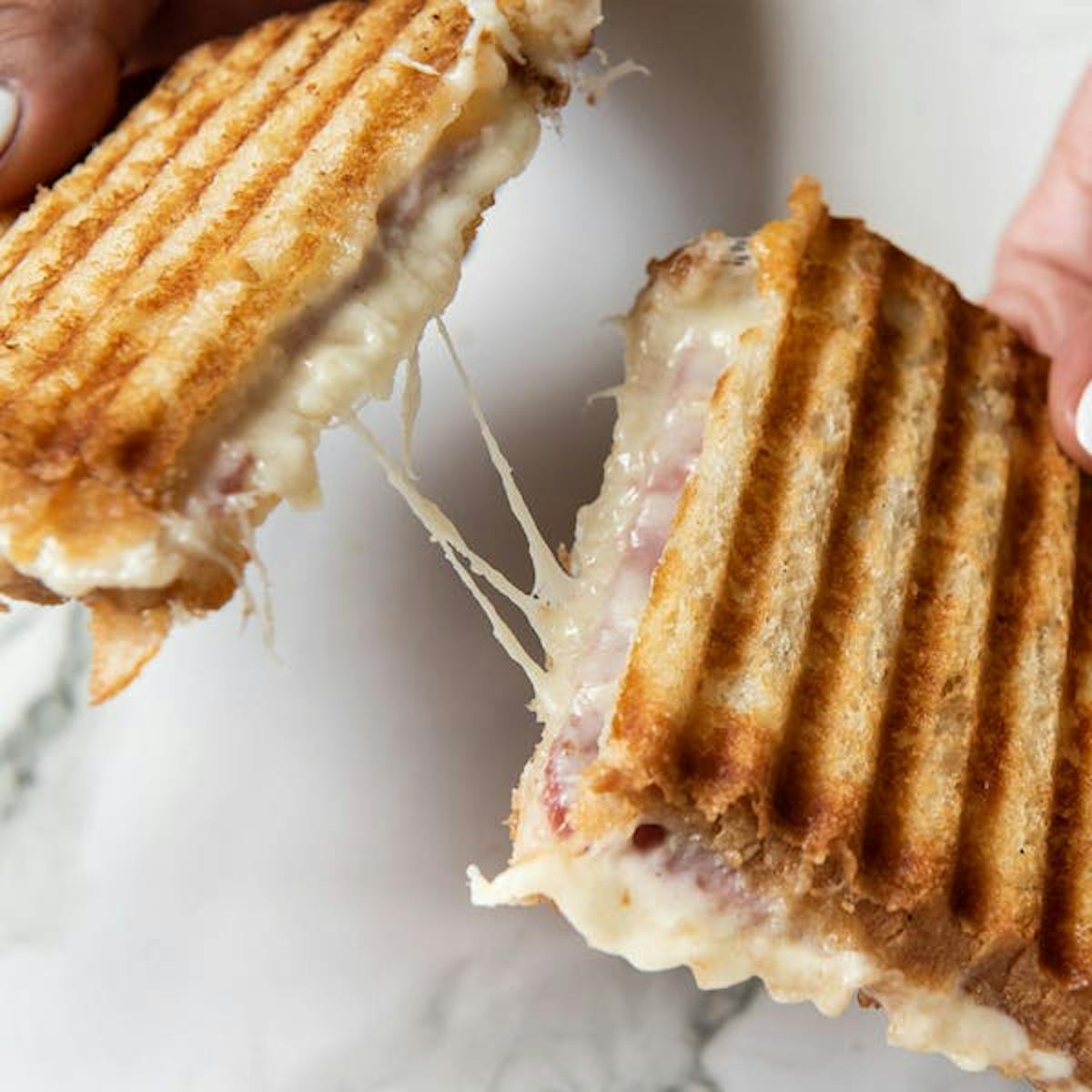Picnic Perfect: Spanish Sandwiches

These sandwiches are the best thing since sliced bread
If you’ve traveled through Spain, you’ve no doubt experienced the multitudes of Spanish sandwiches available at cafes, roadside stops, cafeterias, and the like. The simplicity of these sandwiches and the quality of ingredients — including specialties like Iberico ham and Manchego cheese — are what make these lunchtime and snacktime bites a must-try.
Sandwiches in Spain come by many names. A bikini, for example, isn’t what you’d wear on the beach in Ibiza, it’s a pressed sandwich. And if you’re thinking that a flauta is a Mexican taquito (which it is!), it’s also a long, thin sandwich popular at Barcelona street stalls.
Read on to learn more about all of these carb-friendly delights. This summer, experience the plethora of options between bread at Mercado Little Spain, whether you’re dining with us, taking lunch on the nearby High Line, or planning a picnic at the newly opened Little Island a couple of blocks south.
A Bikini You Eat
No, the bikini sandwich is also not named for the iconic bathing suit. The name comes from Barcelona’s La Sala Bikini, which opened in 1953 and offered revelers both a nightclub and a mini golf course. The most popular sandwich on the menu was a croque monsieur, or a pressed ham and cheese sandwich — but at the time, dictator Francisco Franco wouldn’t allow the use of French or English words in daily life. The sandwich was actually known on the menu as the “home sandwich,” but people began calling it by the name of the establishment. And thus, the bikini was born.
On the sandwich menus at Spanish Diner and El Chininguito, you can get a Bikini made with four Spanish cheeses, or the more traditional ham and cheese — both served warm and melty, as they should be.
The ABC’s of Bocatas
The bocata, or bocadillo as it’s sometimes called, has become a staple in Spanish cafes and tapas bars. It’s typically served on Spain’s version of a baguette, known as barra de pan, and can be filled with everything from omelets to ham to sausage to tuna — but as is the case with many iconic Spanish dishes, simplicity is key.
At Spanish Diner, bocatas are made on pan de cristal (Spanish-style ciabatta) and are spread with crushed tomato before being stacked with simple, but delicious, fillings. There’s a Serrano ham version, a Manchego cheese version, and a bocata that combines the two. Each one is drizzled with a little Spanish extra virgin olive oil, as well, to up the flavor factor. El Chiringuito has two bocatas that are equally delicious. One combines marinated pork and cheese, while a vegetarian version marries sweet piquillo peppers with creamy goat cheese.
The Long and Short of Flautas
The flauta is a long, skinny, flute-like sandwich named for the crunchy, airy bread it’s served on (imagine a thinner, 10-inch baguette with a little more color than a typical French one). Chef José Andrés actually started serving flautas in 2013 out of his food truck, Pepe, as he wanted to bring one of the most iconic and easy-to-eat street foods of Barcelona to Washington, DC.
Flautas come in three delicious combinations at El Chiringuito, each brushed with sweet crushed tomato: the Queso Manchego, the Jamón Serrano, and the Mixto with both ham and cheese. No matter which one you choose, you’re sure to get a-”long” just fine.
More on Molletes
In Spain, mollete is a soft, round white flatbread that’s a staple at breakfast time but can also be used as a sandwich base. The specialty bread of the Andalusian region is often lightly toasted and topped with little more than a drizzle of olive oil or quick rub of garlic to start the day.
The bread also makes for a delicious sandwich base, as evidenced by the mollete at La Barra, in which a Cristal bun is filled with a spicy-salty-sweet combination of sobrasada spread, mahón cheese, and honey.
